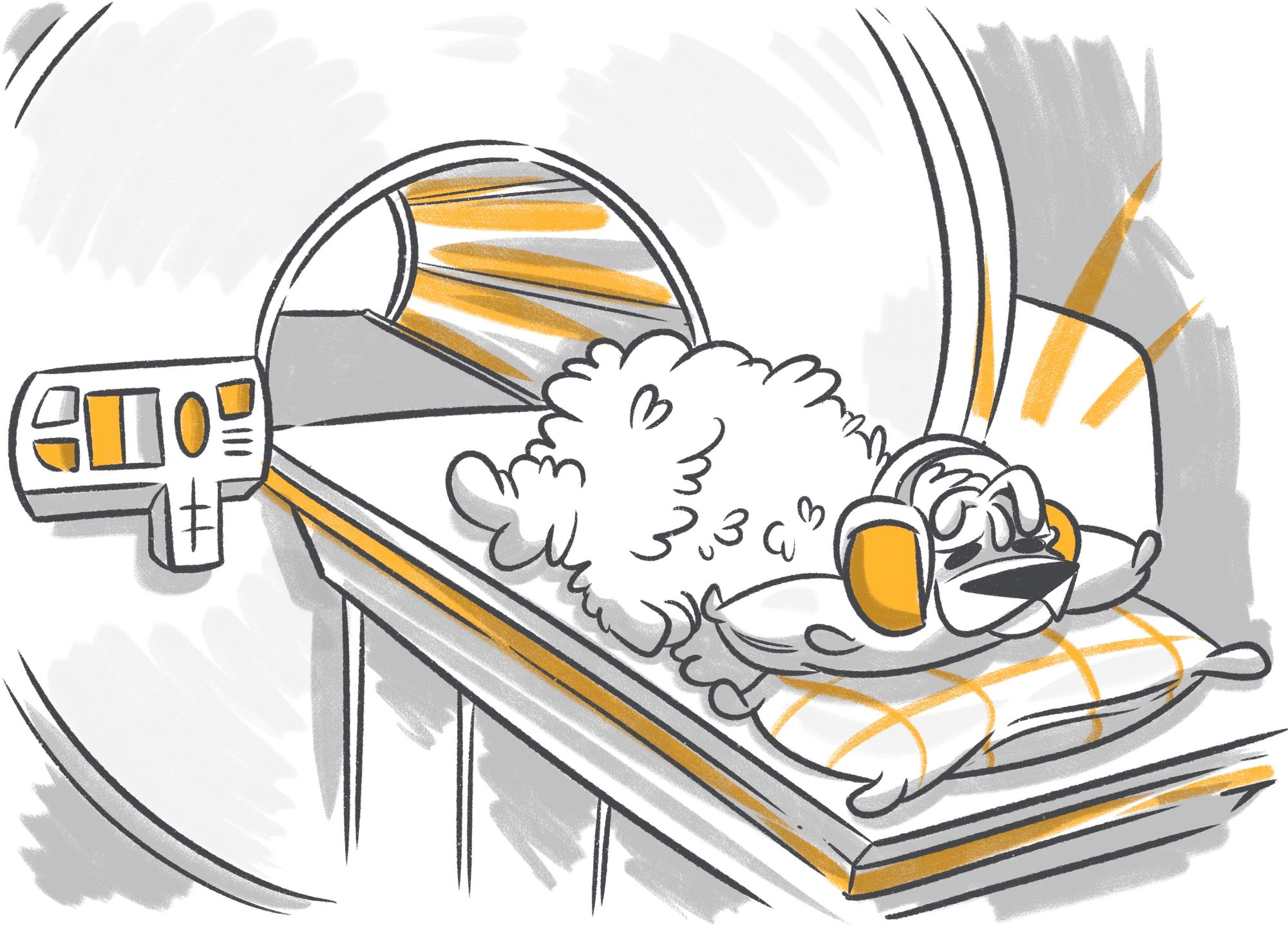Although there are exceptions to the rule, brain tumors in dogs tend to fall into one of two categories: primary or secondary. Many pet parents recoil in horror and fear when they hear those two words, but it’s not always the worst news. With treatment and care, your pet can still live a happy life with a brain tumor, and the earlier treatment is started, the better.
Stop Googling - Ask a Real Vet
So, before we all imagine the worst, why don’t we get to know brain tumors in dogs a little better? Knowledge is power, right?
Content:
- What are the Signs of a Brain Tumor
- What Causes Brain Tumors in Dogs
- Life Expectancy for Dogs with Brain Tumors
- How are Brain Tumors Treated
- How Can the Emergency Fund Help with Treatment
- Conclusion
What are the Signs of a Brain Tumor
The symptoms of a brain tumor in dogs can differ from one to another, but one thing they do tend to have in common is seizures. You may not be aware of these at first, especially if you’re at work a lot of the time, which is why it’s worth investing in the Petcube Camera to monitor your furry family members.
Signs of a brain tumor can look very different in different dogs but often come with the following:
- Collapsing;
- Moving legs in a cycling or paddling motion;
- Twitching and jerking;
- Repeated tightening and relaxing of the muscles;
- Foaming coming from and around the mouth;
- Excessive saliva production and drooling;
- Accidental bowel or bladder movements;
- No response/unconscious.
Other signs a dog with a brain tumor might display are overall confusion, acting unusually, being unstable when standing or moving around, walking around in circles, having no or reduced interest in food and water, and odd eyesight problems, such as blindness.
What Causes Brain Tumors in Dogs
Secondary brain tumors are caused by cancer that has started somewhere else and spread throughout the body. This is known as metastasis. According to NC State Veterinary Hospital study, this happens more often with hemangiosarcoma, mammary carcinoma, and melanoma cancers.
Primary brain tumors such as adenocarcinoma, meningioma, and choroid plexus papilloma have as yet unknown causes. Experts aren’t sure why they happen, although there are several theories. These include immune system problems, genetics, environmental and dietary factors, trauma, and more.
Life Expectancy for Dogs with Brain Tumors
Almost all types of brain tumors come with incredibly varied life expectancies depending on the stage at which they were caught, the size of the tumor, placement, potential technical complications with certain treatment styles, and more.
According to the University of Missouri Veterinary Health Center research, meningiomas in dogs have a life expectancy of two months to two-plus years. This is the most common type of brain cancer, with radiotherapy classified as the most effective treatment for a longer post-treatment expectancy. This treatment won’t be suitable for all tumor types and positions, however.
Early diagnosis enables early treatments, which give your pup the best chance of survival and full recovery.
Sadly, secondary brain tumors in dogs, caused by the spread of something else, have the poorest prognosis. Without treatment, dogs are expected to live for only three months (approximately), depending on their stage, size, and other factors.
How are Brain Tumors Treated
Brain tumors are treated on a case-by-case basis, ensuring the best outcome for the pet. There are several options, depending on the age of your pup, size, breed, weight, underlying medical conditions, and more.
Surgery
In some cases, full or partial removal of the tumor can help improve the health of your pet as well as prolong its life expectancy. This isn’t always advisable, especially with senior dogs that won’t cope well with anesthesia, which can often come with its side effects.
Surgery isn’t an option when the tumor is in certain parts of the brain because the removal of that particular part of the organ will have significant repercussions.
Chemotherapy
The brain is an important and powerful organ, so once again, chemotherapy won’t always be a safe or recommended option. It can and likely will cause problems with other parts of the brain, which could then go on to affect motor function, simple thought processing, and more.

Medication
Several drug therapies can be used in the battle against brain tumors in dogs. Corticosteroids and other anti-inflammatory medications reduce swelling and inflammation around the brain, along with drugs that prevent seizures and other tumor side effects and painkillers.
These medications do not treat the tumor but can alleviate symptoms.
Radiotherapy
This is sometimes used in conjunction with other treatment approaches, particularly medications, and can reduce or even totally shrink a tumor. It can, quite literally, take away the problem and allow the pup to go right back to how things were before.
Once again, however, radiotherapy can be too aggressive and uncontrollable to avoid harming other areas of the brain than just the tumor.
Palliative Care
A dog with a brain tumor in its final stages is unlikely to be eligible for treatment and will instead be given what is known as palliative care. Sadly, this is end-of-life care.
The idea of palliative care is to make your pet’s life as comfortable, pain-free, and happy as possible until it’s no longer possible. Likely, your vet will also discuss the idea of euthanasia. As distressing as this is to consider, the overall welfare of your pet is important.
How Can the Emergency Fund Help with Treatment
Seizures caused by a brain tumor can cause breathing difficulties and could even stop your pet's breathing altogether. Petcube’s Emergency Fund was designed for emergency, life-threatening situations, stepping in to cover the cost, of up to $3,000 per year, taking the burden completely away from you.
With access to 24/7 veterinary advice and covering up to six household pets, less than $1 per day might just be the most economically friendly thing you buy this year.
Conclusion
If you’re currently concerned about your precious pooch and are awaiting testing or a vet appointment, know that we’re sending you and your pet our best positive vibes!
A brain tumor is not the type of condition to slow-coach a vet’s appointment. The sooner you get it checked out, the longer you are likely to have to enjoy and pamper your pet.
Was this article helpful?
Help us make our articles even better









